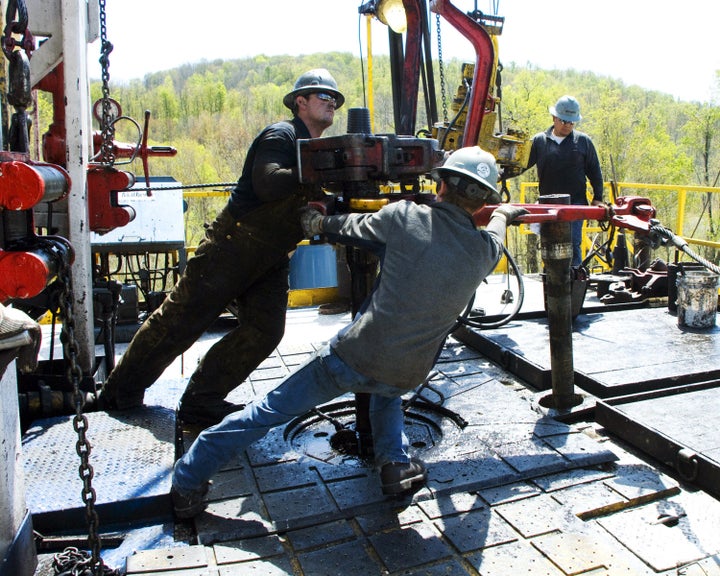
The Environmental Protection Agency will focus its national study of hydraulic fracturing on seven areas in five states, but will exclude the two Wyoming gas fields where agency researchers have already collected some of the most in-depth data on drilling's environmental impacts.
The study – which was announced last March, without specifics on research sites – will investigate alleged water contamination from drilling in five areas in Texas, Colorado, North Dakota and Pennsylvania. It also will encompass cradle-to-grave research projects in Pennsylvania and Louisiana, where the agency will track drilling's effects on water quality from before the drill bit hits the ground to after hydraulic fracturing has been performed.
"This is about using the best possible science to do what the American people expect the EPA to do – ensure that the health of their communities and families are protected," said Paul Anastas, assistant administrator for EPA's Office of Research and Development, in a statement.
Conspicuously absent from the list are sites in Sublette County and Pavillion, Wyo., where EPA scientists began testing water and collecting data three years ago in response to allegations of drilling-related contamination. In Sublette County, one of the most active drilling fields in the country, researchers discovered benzene in 88 water wells in 2008 and have been testing ever since. In Pavillion, the EPA found metals, methane, hydrocarbons and traces of compounds related to fracking chemicals in residential water wells in 2009.
Research in both areas is ongoing and may still inform the EPA's work, but it will not play a central role in the nationwide investigation into whether hydraulic fracturing is safe, or presents a risk to drinking water. The EPA did not immediately respond to questions about the role of the Wyoming research.
Fracturing is a process used to extract trapped oil and gas from thousands of feet below ground by injecting a mixture of water, sand and chemicals under enough force to shatter the rock and allow the oil and gas to flow out. Advancements in the technology have made large, deeply buried natural gas deposits in the Marcellus Shale and elsewhere accessible for the first time. But the process is exempt from federal regulation and there is little research showing where the chemicals wind up after they are pumped underground, or how they can be safely disposed of after the drilling is finished.
A series of articles by ProPublica beginning in 2008 found a pattern of groundwater water pollution across states where fracturing is used to tap natural gas. Residents in these areas complained they could light their faucets on fire and had suffered health effects they worried were caused by the drilling processes.
Now Congress is weighing bills that would lead to regulation of fracturing and the EPA is undertaking the first national study to evaluate the effects of fracturing on drinking water.
On Thursday, the EPA said it had narrowed down more than 40 prospective research sites to seven based on factors ranging from the size of the population and the proximity of drinking water supplies to drilling, to health complaints and the extent of alleged contamination.
Five research projects will take a forensic approach, retroactively investigating places where drilling has already occurred and where contamination has been alleged. The sites for these projects are:
● Kildeer and Dunn Counties in North Dakota's Bakken Shale
● Wise and Denton Counties in Texas' Barnett Shale
● Bradford and Susquehanna Counties- in Pennsylvania's Marcellus Shale
● Washington County, also in Pennsylvania's Marcellus Shale
● Las Animas County in Colorado's Raton Basin
At two additional sites – in DeSoto Parish, La., in the Haynesville Shale and a separate site in Washington County, Pa. – the EPA will attempt to observe and measure the changes drilling brings to an area as it happens.
These prospective studies could prove the most interesting, and the most challenging. To gain access to drilling sites, EPA researchers have partnered with two companies that have agreed to allow agency scientists to be present before a drill pad is cleared, as it is drilled, and as it is hydraulically fractured. In a public conference call Thursday, EPA officials mentioned Chesapeake Energy and Range Resources as possible partners, but did not confirm these were the companies it had begun working with. Chesapeake is the predominant drilling company in the Haynesville Shale and Range is active in central and western Pennsylvania.
The lifecycle study will allow the EPA to test water quality near the drilling sites before any activity takes place, and then monitor for changes as the companies drill their wells. It also will allow the EPA to collect and test fracturing fluids and other waste that flows back out of the well, providing an exact chemical portrait that can be compared to water contaminants if they are discovered. According to an EPA official, the agency is considering "tagging" the hydraulic fracturing fluids with a benign tracer, a technique that could finally make it possible to see exactly where the injected fracturing fluids wind up.